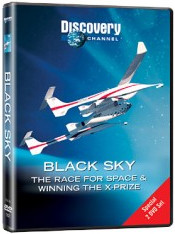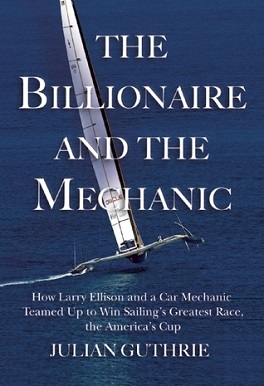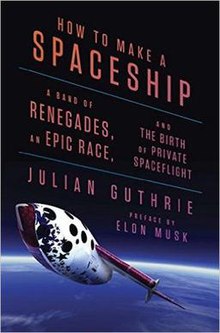
The Ansari X Prize was a space competition in which the X Prize Foundation offered a US$10,000,000 prize for the first non-government organization to launch a reusable crewed spacecraft into space twice within two weeks. It was modeled after early 20th-century aviation prizes, and aimed to spur development of low-cost spaceflight.

The Teacher in Space Project (TISP) was a NASA program announced by Ronald Reagan in 1984 designed to inspire students, honor teachers, and spur interest in mathematics, science, and space exploration. The project would carry teachers into space as Payload Specialists, who would return to their classrooms to share the experience with their students.

Michael Winston Melvill is a world-record-breaking pilot and one of the test pilots for SpaceShipOne, the experimental spaceplane developed by Scaled Composites. Melvill piloted SpaceShipOne on its first flight past the edge of space, flight 15P on June 21, 2004, thus becoming the first commercial astronaut, and the 435th person to go into space. He was also the pilot on SpaceShipOne's flight 16P, the first competitive flight in the Ansari X Prize competition.
Douglas Bennett Shane is President of The Spaceship Company, as well as an American test pilot who has trained as a commercial astronaut. He was a member of the Scaled Composites astronaut team and one of the test pilots for SpaceShipOne, the experimental spaceplane developed by Scaled Composites. Shane worked as the operations director on the SpaceShipOne project in addition to being one of the program pilots, and later served as President of Scaled Composites from 2008 through early 2013.

Flight 15P of SpaceShipOne (X0) was the first privately funded human spaceflight. It took place on June 21, 2004. It was the fourth powered test flight of the Tier One program, with the previous three test flights reaching much lower altitudes. The flight carried only its pilot, Mike Melvill, who thus became the first non-governmental astronaut.

Tier One was a Scaled Composites' 1990s–2004 program of suborbital human spaceflight using the reusable spacecraft SpaceShipOne and its launcher White Knight. The craft was designed by Burt Rutan, and the project was funded 20 million US Dollars by Paul Allen. In 2004 it made the first privately funded human spaceflight and won the 10 million US Dollars Ansari X Prize for the first non-governmental reusable crewed spacecraft.

Flight 16P of SpaceShipOne was a spaceflight in the Tier One program that took place on September 29, 2004. It was the first competitive flight in the Ansari X PRIZE competition to demonstrate a non-governmental reusable crewed spacecraft, and is hence also referred to as the X1 flight. A serious roll excursion occurred during boost, so the flight did not achieve the expected altitude. However, it exceeded 100 km altitude, making it a successful X PRIZE flight.

Flight 17P of SpaceShipOne was a spaceflight in the Tier One program that took place on October 4, 2004. It was the second competitive flight in the Ansari X Prize competition to demonstrate a non-governmental reusable crewed spacecraft, and is hence also referred to as the X2 flight. It was a successful flight, winning the X PRIZE.

Virgin Galactic Holdings, Inc. is a British-American spaceflight company founded by Richard Branson and the Virgin Group conglomerate which retains an 11.9% stake through Virgin Investments Limited. It is headquartered in California, and operates from New Mexico. The company develops commercial spacecraft and provides suborbital spaceflights to space tourists. Virgin Galactic's suborbital spacecraft are air launched from beneath a carrier airplane known as White Knight Two. Virgin Galactic's maiden spaceflight occurred in 2018 with its VSS Unity spaceship. Branson had originally hoped to see a maiden spaceflight by 2010, but the date was delayed, primarily due to the October 2014 crash of VSS Enterprise.
Mojave Aerospace Ventures (MAV) is a company founded by Paul Allen and Burt Rutan to handle the commercial spinoffs from the Tier One project. It owns the intellectual property arising from Tier One, and it is in turn owned by Allen and Rutan's Scaled Composites. In 2004, it signed a deal with Virgin Galactic to develop the Virgin SpaceShip, a suborbital spacecraft, for space tourism. Virgin Group and Scaled Composites have subsequently formed a joint venture, The Spaceship Company, to manufacture the spacecraft.

Peter H. Diamandis is an American marketer, engineer, physician, and entrepreneur. He is best known as the founder and chairman of the XPRIZE Foundation, and the cofounder and executive chairman of Singularity University. He is also cofounder and former CEO of the Zero Gravity Corporation, cofounder and vice chairman of Space Adventures Ltd., founder and chairman of the Rocket Racing League, cofounder of the International Space University, cofounder of Planetary Resources, cofounder of Celularity, founder of Students for the Exploration and Development of Space, vice chairman and cofounder of Human Longevity, Inc.
XPRIZE Foundation is a non-profit organization that designs and hosts public competitions intended to encourage technological development. The XPRIZE mission is to bring about "radical breakthroughs for the benefit of humanity" through incentivized competition. It aims to motivate individuals, companies, and organizations to develop ideas and technologies.

The X Prize Cup is a two-day air and space exposition which was the result of a partnership between the X Prize Foundation and the State of New Mexico that began in 2004 when the Ansari X-Prize was held. This led to plans to build the world's first true rocket festival. Three X-Prize Cups have been held: in 2005, 2006 and 2007. Each X Prize Cup hosts different events and demonstrations, such as rocket-powered bicycles, rocket jet packs; but particularly notable are the Lunar Lander Challenge and the Space Elevator Games. 85,000 visitors attended the 2007 X Prize Cup. Although there was no X Prize Cup in 2009, there was a Lunar Lander Challenge.
A space competition is an inducement prize contest offering a prize to be given to the first competitor who demonstrates a space vehicle, or a space exploration apparatus, which meets a set of pre-established criteria. It spurs pioneering development in private spaceflight.
The Eugene M. Emme Award is an award given annually to a person or persons selected by a panel of reviewers from the American Astronautical Society History Committee to recognize "the truly outstanding book published each year serving public understanding about the positive impact of astronautics upon society." The award is in honor of Eugene M. Emme, NASA's first historian.

Black Sky: The Race For Space is a 2004 Discovery Channel documentary about Space Ship One, and how a small team backed by Paul Allen achieved human suborbital spaceflight and won the Ansari X Prize. It contains insights about how the rocketplane was built, the challenges they faced when they flew it, the vision of Burt Rutan about the future of this technology, and his thoughts about NASA and government. It won a Peabody Award in 2004.

Eric C. Anderson is an American entrepreneur and aerospace engineer. He is the co-founder and chairman of Space Adventures Ltd., the first commercial spaceflight company, which has arranged for eight missions for privately funded individuals to the International Space Station since 2001. Anderson is widely credited as having established the market for commercial spaceflight. He is also a founding partner of Space Angels Network, CEO of Intentional Software Corporation, co-founder and chairman of Planetary Power, Inc., co-founder and former co-chairman of Planetary Resources and chairman of Personal.com and Booster Fuels.

The billionaire space race is the rivalry among entrepreneurs who have entered the space industry from other industries – particularly computing. This private spaceflight race involves sending privately developed rockets and vehicles to various destinations in space, often in response to government programs or to develop the space tourism sector.
Julian Guthrie is an American journalist and author based in San Francisco, California, USA.

The Billionaire and the Mechanic is a non-fiction book by Julian Guthrie about Oracle Team USA's quest to win the America's Cup, the oldest trophy in sport. The billionaire in question is Larry Ellison, founder and chairman of Oracle Corporation, and the car mechanic in question is Norbert Bajurin, the Commodore of the Golden Gate Yacht Club.













